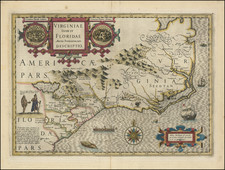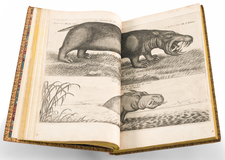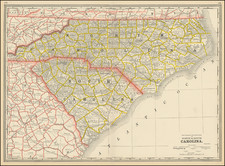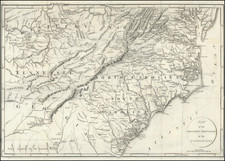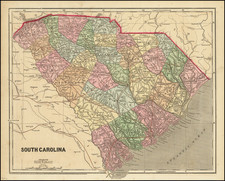A Triumph of Composition and Execution.
This exquisite Havell edition double elephant folio aquatint by John James Audubon portrays a mature Little Blue Heron male, distinguished by its slate-blue plumage, elegantly positioned in the foreground. Behind this striking figure, a white juvenile gracefully resides amidst the grassy wetland backdrop near Charleston, South Carolina.
Compared with Audubon's other images of members of the family Ardeidae, his Blue Heron, or Crane is particularly successful. The mature bird has a level of personality and refinement not found in his images of, say, the Tricolor Heron, Reddish Egret, or Green Heron.
The original drawing for the plate is held at the New-York Historical Society and can be seen here. A decade earlier, in 1821, Aubudon had made another drawing of the Little Blue Heron, also held by the Society. The transformation between the two drawings substantially illuminates Audubon's progression as an artist during the 1820s.
In Audubon's Ornithological Biography, the Blue Heron's behaviors and habits are well documented. According to Audubon, these birds were often spotted along the soft mud banks of the Floridian rivers and lakes, and they showcased a particular fondness for fiddlers and small crabs. Their elegant hunting technique — a calculated and measured approach towards their prey, followed by a swift and accurate strike — is a testament to their keen senses and agile physiques.
Little Blue Heron
The Little Blue Heron (Egretta caerulea) is a small to medium-sized wading bird distinguished by its slate-blue plumage, which becomes deeper and more vibrant as the bird matures. Juvenile Little Blue Herons are white (as with the juvenile to the left of this image), leading occasionally to confusion with other white herons or egrets, but they transition to their iconic blue coloration as they age. The species has a long, slender neck and bill, the latter of which is slightly decurved. Preferring freshwater or brackish wetlands and estuaries, they hunt for a variety of prey, from small fish to crustaceans and insects. Their methodical foraging technique involves slow, deliberate steps to stalk their prey before striking swiftly. The Little Blue Heron can be found across the southeastern United States, the Caribbean, and Central America, migrating further south in winter.
John James Audubon's Double Elephant Folio Birds of America: The Havell Edition (1827-1838)
The present hand-colored original Audubon print comes from the Havell double elephant folio edition of Birds of America, the greatest color plate book ever made. This work was Audubon's magnum opus and was published at immense expense over almost a decade, between 1827 and 1838. The Havell Edition of Birds of America included 435 hand-color aquatinted plates, and it is estimated that between 165 and 175 complete sets were produced. Today, a given individual image probably exists in no more than 60 loose examples, though for some plates the number will be much lower. Audubon aquatint engravings from the Havell Edition were printed on J. Whatman wove paper, the best paper in the world at the time - and to this day an exceptional fine art paper. The sheets of paper were approximately 26½ x 39½ inches untrimmed. Importantly, they all feature watermarks that are variations on "J.Whatman" or "J.Whatman / Turkey Mill" with the date of manufacture sometimes appended. In addition to the name of the bird depicted (and sometimes its gender, age, and botanical notes as well) Audubon's name and the name of the engraver also appear printed on Havell Edition plates. On the lower left side is printed "Drawn from nature by John James Audubon F.R.S. and F.L.S." (Fellow of the Royal Society of London and Fellow of the Linnaean Society). The only exception to this is Plate 64, Swamp Sparrow, in which Lucy Audubon is credited. On the lower right side is printed "Engraved by" (in a few cases the words "Engraved and colored by" or "Retouched by" appear) followed by the name W.H. Lizars or Robert Havell, Jr. (Sometime after his father's death in 1832 Robert Havell, Jr. dropped the Jr.)
Robert Havell Jr. was the principal engraver of Audubon's Birds of America, perhaps the most significant natural history publication of all time.
Havell's aquatint engraving of all but the first ten plates of John James Audubon's Birds of America is now recognized as a significant artistic achievement in its own right and an essential component of the success of Birds of America. He and Audubon became close friends and associates during their lengthy collaboration.
In 1839, Havell went to America at the invitation of Audubon, first residing in Brooklyn. He settled in Ossining on the Hudson River and later moved to Tarrytown, New York, living there from 1857 through his remaining years. Although Havell continued to work in aquatint and engraving (primarily city panoramas), he devoted most of his attention to painting the countryside of the Hudson River valley. He travelled frequently in a homemade horse-drawn trailer, sketching and taking notes and translating his sketches into larger oils.
Robert Havell Jr. is considered a member of the Hudson River School of American painters.
John James Audubon (1785-1851), born Jean-Jacques Rabin in Haiti on April 26, 1785, was a Franco-American ornithologist, naturalist, and painter, celebrated for his detailed illustrations of North American birds in their natural habitats. His major work, a color-plate book titled The Birds of America, is considered one of the finest ornithological works ever produced.
Audubon's early years were shaped by tumultuous events. Born out of wedlock in the French Caribbean colony of Saint-Domingue (now Haiti) to a Creole mother and a French sea captain, he was smuggled to Nantes, France, during a slave rebellion. There, he was adopted by his father and stepmother and raised as their own. His childhood in France was filled with outdoor adventures and initial forays into drawing.
In 1803, to avoid conscription into Napoleon's army, he was sent to America, where he managed one of his father's estates near Philadelphia. This move further kindled his profound interest in the wildlife of the New World. Despite a few failed business ventures and challenges, Audubon remained committed to his passion for nature and art.
His dream to document all of the birds of America began to take form in the 1810s. Travelling through America's wilderness, Audubon observed, hunted, and painted birds. He developed a particular technique that involved wiring freshly killed birds into a natural pose on a board. This innovative method combined with his keen observation allowed him to create more lifelike illustrations than many of his contemporaries.
Failing to secure American subscribers or a publisher for his extensive collection, Audubon traveled to the United Kingdom in 1826. There, The Birds of America was met with critical acclaim. Between 1827 and 1838, this work was published in sections, comprising 435 hand-colored, life-sized prints made from engraved plates.
Audubon followed this success with a companion work, Ornithological Biography, which provided detailed narratives about each species. His later work included studies of American mammals, and he became one of the founding members of the New-York Historical Society.
Despite facing numerous challenges throughout his life, including financial hardships and criticism from some peers, Audubon's dedication to his work resulted in an invaluable contribution to ornithology and American art. He died on January 27, 1851, in New York City. Today, his legacy continues, notably through the National Audubon Society, which promotes conservation and appreciation of birds and their habitats.











![(American Lithography) [Collection of Early American Lithographs, including the First Known American Lithograph of a Natural History Subject - by Charles Alexandre Lesueur; early lithographs by Abadie and other unnamed experimentalists; and unattributed student artwork, likely by pupils of Marie Duclos Fretageot's girl's school]](https://storage.googleapis.com/raremaps/img/small/90036.jpg)
